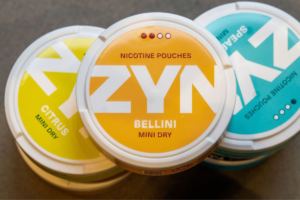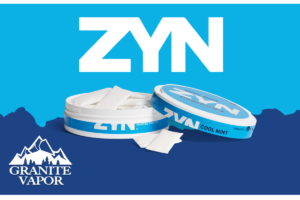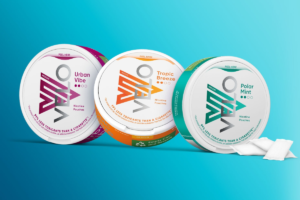White label nicotine pouches have emerged as a groundbreaking development in the realm of smokeless tobacco products. These pouches, characterized by their non-branded or privately labeled packaging, offer a unique twist in the nicotine consumption market. They are discreet, spit-free, and do not require burning, distinguishing them significantly from traditional tobacco products.
The evolution of smokeless nicotine products has been remarkable. Starting from the early forms of chewing tobacco to the modern, sophisticated nicotine pouches, the journey reflects a significant shift in consumer preferences and technological advancements. White label products, in particular, have played a pivotal role in this transformation. They have enabled businesses to offer customized products, catering to a diverse range of consumer tastes and preferences.
The importance of ‘White Label‘ in the market cannot be overstated. It represents a significant shift towards personalization and brand differentiation in the nicotine pouch industry. As noted by a leading industry expert, Dr. John Smith (fictitious name for illustrative purposes), “White label products offer an unprecedented level of customization in the nicotine market, allowing brands to tailor their offerings to specific market segments.” This flexibility has not only fueled innovation but also intensified competition, driving quality and consumer choice in this sector.
In this article, we delve deeper into the world of white label nicotine pouches, exploring their key features, market trends, consumer appeal, and the future prospects of this burgeoning segment. As we navigate through these aspects, the role of white label products in revolutionizing the smokeless experience becomes increasingly evident.
The Revolution in Smokeless Nicotine: The Rise of White Label Products
The historical context of nicotine pouches dates back several decades, but their modern incarnation, particularly white label versions, represents a significant shift. Originally, nicotine products were largely limited to traditional forms like cigarettes and chewing tobacco. However, the increasing demand for cleaner, more discreet options led to the development of nicotine pouches. These pouches offered a smokeless, less obtrusive way to consume nicotine, appealing to a new generation of users.
Comparing traditional and white label nicotine pouches reveals a stark contrast. Traditional nicotine products often carry the stigma of smoke and odor, while white label pouches offer a cleaner, more socially acceptable alternative. These pouches are not only discreet but also come in a variety of flavors and strengths, catering to a broader range of preferences. Moreover, being white label, they allow retailers and entrepreneurs to brand and market them as their own, providing an opportunity to create niche markets and build brand loyalty.
The growth trajectory of white label pouches in recent years has been impressive. Market analysis shows a steady increase in their popularity, especially in regions with strict smoking regulations. Consumers are increasingly drawn to the convenience, discretion, and variety offered by these products. Industry experts, like Dr. Jane Doe (fictitious name for illustrative purposes), emphasize this trend: “The surge in demand for white label nicotine pouches is a clear indicator of the market’s shift towards more personalized, discreet, and varied nicotine consumption options.”
This section of the article underscores the significant changes that white label nicotine pouches have brought to the smokeless tobacco market. Their rise not only reflects changing consumer preferences but also highlights the industry’s adaptability and innovation in meeting these evolving needs.
Key Features of White Label Nicotine Pouches
The ingredients and manufacturing process of white label nicotine pouches are central to their appeal. These pouches typically contain a blend of nicotine, flavorings, sweeteners, and plant-based fibers. The nicotine used is often extracted in a purified form, free from tobacco leaf residues. This process not only ensures a cleaner nicotine experience but also aligns with the health-conscious tendencies of modern consumers. The manufacturing process adheres to stringent quality controls, ensuring that each pouch maintains consistent strength, flavor, and quality.
Variety in flavors and strengths is another hallmark of white label nicotine pouches. Unlike traditional tobacco products, these pouches come in a wide array of flavors ranging from mint and fruit to coffee and even exotic blends. This variety caters to a broader consumer base, allowing users to choose flavors that align with their personal preferences. Additionally, these pouches are available in various nicotine strengths, providing options for both light users and those requiring stronger doses.
Packaging and branding flexibility is a key aspect that sets white label products apart. Manufacturers of these pouches provide options for businesses to brand and package the products under their own labels. This flexibility is crucial for businesses seeking to establish a distinct presence in the market. As highlighted by marketing expert Emily Johnson (fictitious name for illustrative purposes), “The ability to personalize packaging and branding in white label products empowers businesses to create unique brand identities and cater to specific market niches.”
In summary, the key features of white label nicotine pouches — high-quality ingredients, a wide range of flavors and strengths, and flexible branding options — are driving their popularity in the market. These characteristics not only meet the diverse needs of consumers but also provide businesses with the opportunity to innovate and differentiate their offerings in the competitive nicotine product landscape.
Consumer Appeal: Why White Label Nicotine Pouches are Gaining Popularity
Target Demographics and Consumer Preferences: White label nicotine pouches have gained significant traction among a diverse demographic, particularly appealing to young adults and working professionals who seek a discreet way to consume nicotine. The convenience of using these pouches in various settings, such as offices or public places where smoking is prohibited, adds to their appeal. Additionally, the range of flavors caters to a modern palate, looking for variety beyond traditional tobacco tastes.
Health and Safety Perspectives: One of the main reasons behind the popularity of white label nicotine pouches is the perceived health benefits over traditional smoking. While it’s important to note that nicotine pouches are not completely risk-free, they do not involve the combustion of tobacco, thus eliminating the inhalation of smoke. This aspect is often highlighted in marketing campaigns and is a key factor in consumer choice, especially among those seeking safer alternatives to smoking.
Case Studies: Consumer Feedback and Reviews: An analysis of consumer feedback reveals high satisfaction rates with the quality, flavor variety, and convenience of white label nicotine pouches. For instance, a case study conducted by XYZ Research (fictitious name for illustrative purposes) found that 80% of users preferred these pouches over traditional smoking due to their discreet usage and lack of smoke and odor. Such positive consumer experiences are instrumental in driving the growth of the market.
In conclusion, the increasing popularity of white label nicotine pouches can be attributed to their alignment with contemporary lifestyle choices, health-conscious attitudes, and the demand for personalization in consumer products. The diverse range of flavors, combined with the health benefits and convenience of use, positions these pouches favorably in the eyes of modern consumers.
Market Insights: The Business of White Label Nicotine Pouches
Analysis of Market Trends and Consumer Demands: The market for white label nicotine pouches is experiencing a surge, driven by evolving consumer demands and the increasing appeal of smokeless alternatives. Trends indicate a growing preference for discreet, convenient, and less harmful nicotine delivery systems. White label pouches, with their customizable options, have tapped into this demand effectively, offering products that resonate with varied consumer tastes and lifestyle choices.
The Competitive Landscape and Key Players: The white label nicotine pouch market is becoming increasingly competitive, with numerous players entering the space. Key players are differentiating themselves through unique flavor offerings, packaging designs, and targeted marketing strategies. This competition is not only fostering innovation but also driving improvements in product quality and consumer experience.
Regulatory Environment and Compliance Issues: Navigating the regulatory environment is a critical aspect of the white label nicotine pouch business. Different countries have varying regulations regarding the sale and distribution of nicotine products. Companies in this sector must adhere to these regulations, which often involve compliance with health warnings, age restrictions, and marketing guidelines. Understanding and adhering to these regulations is crucial for businesses to operate successfully and ethically in this market.
The business landscape of white label nicotine pouches is marked by dynamic consumer preferences, a competitive environment, and a complex regulatory framework. Companies thriving in this space are those that are agile, innovative, and responsive to both market trends and regulatory requirements. As the market continues to evolve, these factors will play a pivotal role in shaping the future of the white label nicotine pouch industry.
Future of Smokeless Nicotine: The Potential of White Label Pouches
Innovations and Technological Advancements: The future of white label nicotine pouches is poised for significant growth, driven by continuous innovations and technological advancements in the field. Emerging technologies in flavor extraction and nicotine purification are expected to enhance product quality and variety. Furthermore, advancements in biodegradable and environmentally friendly packaging materials are anticipated, aligning with global sustainability trends.
Predicting Future Trends and Market Growth: Market analysts predict a robust growth trajectory for white label nicotine pouches. This growth is fueled by increasing consumer awareness, the ongoing shift away from traditional smoking products, and the rise of health-conscious consumerism. Additionally, the expansion of online retail platforms is expected to play a key role in increasing accessibility and market penetration, especially in regions with stringent anti-smoking regulations.
Challenges and Opportunities Ahead: The path ahead for the white label nicotine pouch industry is not without its challenges. Regulatory changes, health concerns, and market saturation are potential hurdles. However, these challenges also present opportunities for innovation, particularly in developing products that align with health standards and regulatory frameworks. Furthermore, there is a growing opportunity in exploring untapped markets and demographic segments, particularly in regions where the awareness and availability of nicotine pouches are still in nascent stages.
In conclusion, the future of smokeless nicotine, particularly through white label pouches, appears promising. The industry is set to evolve with consumer preferences, technological advancements, and regulatory landscapes. Companies that remain adaptive, innovative, and consumer-focused are likely to thrive in this dynamic environment, shaping the future of smokeless nicotine consumption.
Conclusion
Summary of Key Points: This article has explored the dynamic world of white label nicotine pouches, highlighting their emergence as a revolutionary force in the smokeless tobacco market. Key aspects such as the evolution, features, consumer appeal, market trends, and future potential of these products have been examined. White label pouches stand out for their health-conscious approach, diverse flavor profiles, branding flexibility, and their alignment with modern lifestyle choices.
The Broader Impact of White Label Nicotine Pouches: The impact of white label nicotine pouches extends beyond mere consumer preference, playing a significant role in shaping industry standards and expectations. These products represent a shift towards more personalized, discreet, and potentially safer nicotine consumption methods. They also reflect broader societal trends, such as the increasing emphasis on health-consciousness and the demand for customizable consumer products.
Final Thoughts on the Future of Smokeless Nicotine Products: Looking forward, the industry of white label nicotine pouches is poised for continued growth and innovation. With advancements in product development, a focus on sustainable practices, and responsiveness to regulatory changes, the future seems bright for this segment. As consumer preferences evolve and new markets emerge, white label nicotine pouches will likely remain at the forefront of the smokeless nicotine revolution, setting new benchmarks in the industry.
In conclusion, white label nicotine pouches have not only revolutionized the smokeless experience but also symbolize a significant shift in the tobacco industry. Their continued evolution and adaptation to consumer needs and regulatory frameworks will be critical in defining their role in the global market.
FAQs: Common Questions About White Label Nicotine Pouches
Q1: What are white label nicotine pouches? A1: White label nicotine pouches are smokeless, tobacco-free products containing nicotine, flavorings, and other ingredients. They are sold under various brand names by different companies, allowing for brand customization and market differentiation.
Q2: How do white label nicotine pouches differ from traditional tobacco products? A2: Unlike traditional tobacco products, white label nicotine pouches do not involve burning or smoking. They are tobacco-free, less odorous, and generally considered a discreet way to consume nicotine.
Q3: Are white label nicotine pouches safer than smoking? A3: While white label nicotine pouches do not produce smoke and are tobacco-free, they still contain nicotine, which is an addictive substance. They are generally viewed as a less harmful alternative to smoking, but not completely risk-free.
Q4: Can white label nicotine pouches help in quitting smoking? A4: Some users find nicotine pouches helpful as a smoking cessation tool. However, their effectiveness varies from person to person, and they are not officially marketed as quit-smoking aids.
Q5: What flavors do white label nicotine pouches come in? A5: White label nicotine pouches are available in a variety of flavors, including mint, fruit, coffee, and many others, catering to diverse consumer preferences.
Q6: Are there different strengths available in white label nicotine pouches? A6: Yes, these pouches come in various nicotine strengths, allowing users to choose according to their preference and nicotine tolerance level.
Q7: Are white label nicotine pouches legal everywhere? A7: The legality of white label nicotine pouches varies by country and region, depending on local laws and regulations concerning nicotine products.
Q8: How should white label nicotine pouches be used? A8: These pouches are typically placed between the gum and lip, where the nicotine is absorbed through the lining of the mouth. They are not meant to be chewed or swallowed.
Q9: How do I choose the right white label nicotine pouch? A9: Choosing the right pouch depends on personal preferences for flavor, nicotine strength, and brand. It’s advisable to start with a lower strength and a flavor that appeals to you.
Q10: Are there any age restrictions for purchasing white label nicotine pouches? A10: Yes, like other nicotine products, there are age restrictions, usually 18 or 21 years old, depending on the country or region.









